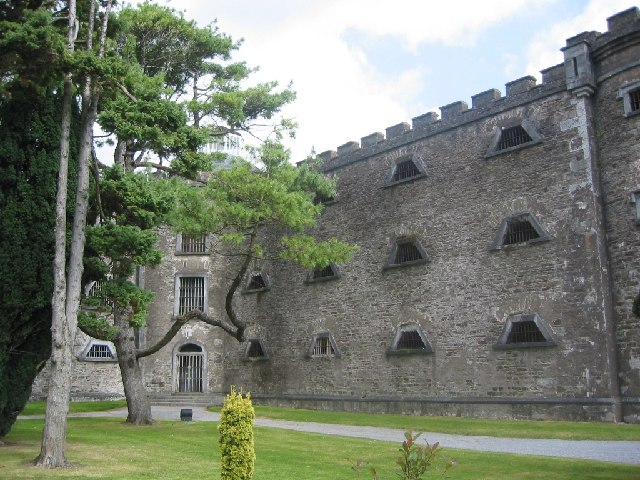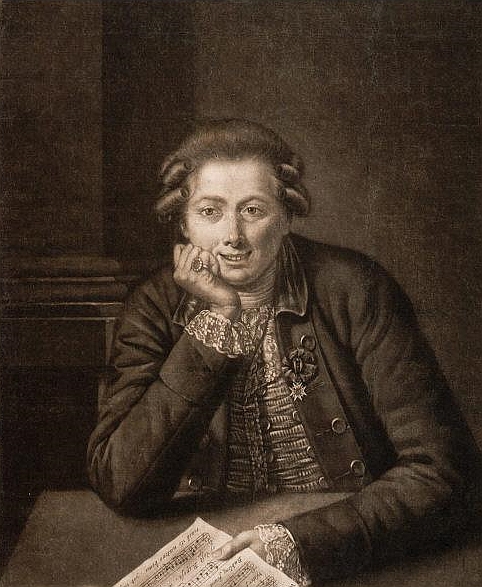|
North Gate Bridge Gaol
The North Gate Bridge Gaol was the prison for Cork City from the early 1700s. From 1798 it was used to hold United Irishmen prisoners from the Irish Rebellion of 1798 until they were transferred to the convict transports Minerva (1773 ship) and Friendship (1793 ship) in 1799 until they sailed for the penal colony of New South Wales in August of that year. https://catalogue.nla.gov.au/Record/1674073 Journal of John Washington Price pp3-9 Since it was built on a confined city centre site it was overcrowded and unhygienic, it was replaced by a more modern prison in Cork City Gaol in the early 1800s. Former prisoners *Giusto Fernando Tenducci Giusto Fernando Tenducci, sometimes called "il Senesino" (c. 1735 – 25 January 1790), was a soprano (castrato) opera singer and composer, who passed his career partly in Italy but chiefly in Britain. Biography Born in Siena in about 1735, Ten ..., 1766 References {{coord missing, Ireland Defunct prisons in the Republic of Ireland ... [...More Info...] [...Related Items...] OR: [Wikipedia] [Google] [Baidu] |
Cork City
Cork ( , from , meaning 'marsh') is the second largest city in Ireland and third largest city by population on the island of Ireland. It is located in the south-west of Ireland, in the province of Munster. Following an extension to the city's boundary in 2019, its population is over 222,000. The city centre is an island positioned between two channels of the River Lee which meet downstream at the eastern end of the city centre, where the quays and docks along the river lead outwards towards Lough Mahon and Cork Harbour, one of the largest natural harbours in the world. Originally a monastic settlement, Cork was expanded by Viking invaders around 915. Its charter was granted by Prince John in 1185. Cork city was once fully walled, and the remnants of the old medieval town centre can be found around South and North Main streets. The city's cognomen of "the rebel city" originates in its support for the Yorkist cause in the Wars of the Roses. Corkonians sometimes r ... [...More Info...] [...Related Items...] OR: [Wikipedia] [Google] [Baidu] |
United Irishmen
The Society of United Irishmen was a sworn association in the Kingdom of Ireland formed in the wake of the French Revolution to secure "an equal representation of all the people" in a national government. Despairing of constitutional reform, in 1798 the United Irishmen instigated a republican insurrection in defiance of British Crown forces and of Irish sectarian division. Their suppression was a prelude to the abolition of the Protestant Ascendancy Parliament in Dublin and to Ireland's incorporation in a United Kingdom with Great Britain. An attempt to revive the movement and renew the insurrection following the Acts of Union was defeated in 1803. Espousing principles they believed had been vindicated by American independence and by the French Declaration of the Rights of Man, the Presbyterian merchants who formed the first United society in Belfast in 1791 vowed to make common cause with their Catholic-majority fellow countrymen. Their "cordial union" would upend ... [...More Info...] [...Related Items...] OR: [Wikipedia] [Google] [Baidu] |
Irish Rebellion Of 1798
The Irish Rebellion of 1798 ( ga, Éirí Amach 1798; Ulster Scots dialect, Ulster-Scots: ''The Hurries'') was a major uprising against British rule in Ireland. The main organising force was the Society of United Irishmen, a Irish republicanism, republican revolutionary group influenced by the ideas of the American Revolution, American and French Revolution, French revolutions: originally formed by Presbyterianism, Presbyterian radicals angry at being shut out of power by the Church of Ireland, Anglican establishment, they were joined by many from the majority Catholic population. Following some initial successes, particularly in County Wexford, the uprising was suppressed by government militia and yeomanry forces, reinforced by units of the British Army, with a civilian and combatant death toll estimated between 10,000 and 50,000. A French expeditionary force landed in County Mayo in August in support of the rebels: despite victory at Battle of Castlebar, Castlebar, they were als ... [...More Info...] [...Related Items...] OR: [Wikipedia] [Google] [Baidu] |
Minerva (1773 Ship)
''Minerva'' was a merchantman launched in 1773 in the East Indies. She traded there for more than 20 years before she made three voyages for the British East India Company (EIC). The first EIC voyage was from 1796 to 1798. In 1799 she transported convicts from Ireland to Australia while under charter to the EIC. From Australia she sailed to Bengal, and then back to Britain. She underwent repairs in 1802 and then traveled to St Helena and Bengal for the EIC. She was lost in 1805 or 1806 under circumstances that are currently unclear. EIC voyage #1 (1796-98) Captain Thomas Blany (or Blamey) sailed ''Minerva'' from Southampton on 22 May 1796, bound for Bengal. She reached Gibraltar on 14 June, Santa Cruz de Tenerife on 8 July, and the Cape on 19 September. She arrived at Diamond Harbour on 10 February 1797. The British government planned an expedition 1797-8 against Manila. The EIC held eight regular ships, and three "dismantled ships" in India to support the expedition, and hire ... [...More Info...] [...Related Items...] OR: [Wikipedia] [Google] [Baidu] |
Friendship (1793 Ship)
''Friendship'' was a three-decker merchantman, launched in 1793. She made three voyages for the British East India Company (EIC). During her first voyage, in 1796, a French privateer captured her, but the Royal Navy recaptured her. On the second, in 1799, she transported convicts from Ireland to Australia. She made a second voyage transporting convicts in 1817-18. On her way back she was broken up in 1819 at Mauritius after having been found unseaworthy. Career In 1794 ''Friendship'' was under the command of Captain Thomas Black and sailing between London and Jamaica. ''Lloyd's Register'' for 1795 continues the information unchanged. ''Lloyd's Register'' for 1796 shows ''Friendship'' changing her trade to London-Cape of Good Hope. EIC voyage #1 (1796) Captain Black received a letter of marque on 16 February 1796. ''Friendship'' left Portsmouth on 23 February 1796, bound for Bengal. She reached São Tiago on 5 April, Simons Bay on 28 May, and the Cape on 13 June. On 27 Oct ... [...More Info...] [...Related Items...] OR: [Wikipedia] [Google] [Baidu] |
Cork City Gaol
Cork City Gaol is a former prison, now a museum, located in Cork City, Ireland. History In 1806 an Act of Parliament was passed to allow the building of a new Cork City Gaol to replace the old gaol at the North Gate Bridge (the old gaol, which was nearly 100 years old, was on a confined site and was overcrowded and unhygienic). The first site chosen for the new prison was at distillery fields, but this site was later deemed to be unsuitable because it was prone to flooding. A site on Sunday's Well was eventually chosen, its altitude being seen as an advantage for containing "gaol fever" (typhus). The site, its approach roads and perimeters was commenced in 1816 and the building of the prison proper started in 1818. The building was designed by William Robertson of Kilkenny and built by the Deane family. The famous sculptor John Hogan worked on the building as a draughtsman. Description The new Cork City Gaol opened in 1824 and was reported as being "the finest in 3 kingdo ... [...More Info...] [...Related Items...] OR: [Wikipedia] [Google] [Baidu] |
Giusto Fernando Tenducci
Giusto Fernando Tenducci, sometimes called "il Senesino" (c. 1735 – 25 January 1790), was a soprano (castrato) opera singer and composer, who passed his career partly in Italy but chiefly in Britain. Biography Born in Siena in about 1735, Tenducci became a castrato, and he was trained at the Naples Conservatory. Castration was illegal in both Church and civil law, but the Roman Church employed castrati in many churches and in the Vatican until about 1902; and throughout the 17th and 18th centuries the public paid large sums of money to listen to the spectacular voices of castrati in the opera houses. In 1753, when he was about seventeen, Tenducci made his professional opera appearance in Venice, as Gasparo in Ferdinando Bertoni's ''Ginevra''. In 1757 and 1758 he was active at the Teatro di San Carlo in Naples. From 1758 he was in London, where he was first heard at the King's Theatre. He sang an aria by the castrato Caffarelli in Baldassare Galuppi's ''Attalo''. and the ... [...More Info...] [...Related Items...] OR: [Wikipedia] [Google] [Baidu] |




